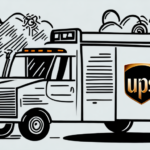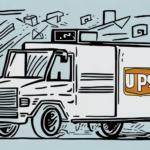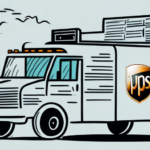The Importance of Timely Deliveries for Customers
Timely deliveries are critical for customers because they have specific deadlines, schedules, and commitments that must be met. Customers often order items online or from distant locations in anticipation of receiving them quickly. A delay or failure to receive the package on time can cause serious inconveniences and disruptions to their plans. For instance, annual reports and seasonal products depend heavily on punctual deliveries. In some cases, customers may miss important deadlines, lose business opportunities, or suffer financial losses due to late deliveries.
Moreover, timely deliveries play a crucial role in maintaining customer satisfaction and loyalty. When customers receive their orders on time, they are more likely to trust the company and continue doing business with them. According to a Forbes Business Council report, 93% of customers rate on-time delivery as a key factor in their overall satisfaction. On the other hand, late deliveries can lead to negative reviews, complaints, and a damaged reputation for the company. Therefore, it is essential for businesses to prioritize timely deliveries and ensure that their logistics and shipping processes are efficient and reliable.
Investigating the Reasons Behind UPS Delivery Delays
Several factors contribute to delays in UPS Next Day Air Saver Delivery. One major reason is the surge in online shopping, especially during peak seasons like holidays, which puts immense pressure on shipping companies to handle increased package volumes. This surge can lead to bottlenecks and delays in the delivery process.
Weather-related issues also play a significant role. Severe weather conditions such as storms, hurricanes, and heavy snowfall can disrupt transportation routes and delay deliveries. For example, the National Centers for Environmental Information report that extreme weather events have become more frequent and intense, further complicating delivery schedules.
Additionally, staff shortages and logistical challenges can impact delivery times. The complexity of delivery routes, especially in densely populated or remote areas, can increase the likelihood of delays. Misrouted or lost packages also contribute to the problem, as resources are diverted to locate and redirect these shipments.
To address these challenges, UPS has implemented several strategies, including investing in advanced technology and equipment to streamline operations, hiring additional staff during peak seasons, and enhancing communication with customers regarding package status. Despite these efforts, delivery delays may still occur due to unforeseen circumstances, and UPS continues to seek solutions to improve its delivery services.
The Impact of Late Deliveries on Business Operations
Late deliveries can have a profound impact on business operations, particularly for companies that rely on just-in-time inventory systems. When deliveries are not made on time, it can cause a ripple effect, leading to delays in production, shipping, and customer service. For example, a study by the Harvard Business Review found that 45% of businesses experience operational disruptions due to late shipments.
Furthermore, consistent late deliveries can damage business relationships with customers, suppliers, and partners, potentially leading to lost revenue and a tarnished reputation. In the long term, businesses may lose customers to competitors who offer more reliable delivery services, resulting in decreased market share and profitability. Additionally, the costs associated with late deliveries, such as expedited shipping fees or penalties for unmet delivery commitments, can add up, affecting the company's bottom line. Therefore, businesses must have contingency plans to mitigate the impact of late deliveries and work closely with their suppliers to ensure timely and reliable delivery of goods.
Customer Service Experience: How Late Deliveries Affect Brand Reputation
The customer service experience is pivotal for brand reputation, and late deliveries can significantly tarnish a company's image. When customers receive their packages late or not at all, their frustration can lead to negative reviews, social media posts, and formal complaints, all of which can harm the brand's reputation. According to a Nielsen Insights report, 70% of consumers are less likely to purchase from a company again if they experience delayed deliveries.
Additionally, late deliveries can result in financial losses for the company. Compensation or refunds may be necessary to appease dissatisfied customers, leading to direct financial costs. Furthermore, investigating the causes of delays and implementing solutions requires additional resources, which can strain the company's operations and budget. Maintaining a positive brand reputation requires prioritizing timely and efficient deliveries to prevent these negative consequences.
The Role of Technology in Ensuring On-Time Deliveries
Technology plays a crucial role in ensuring on-time deliveries. UPS has invested significantly in technologies such as package tracking systems, supply chain monitoring tools, and route optimization software. These technologies enhance the speed and accuracy of deliveries while reducing the risk of delays. Real-time tracking allows customers to monitor their packages, providing transparency and peace of mind.
One of the latest technological advancements UPS has implemented is the use of autonomous drones for package delivery. Drones can deliver packages faster and more efficiently, especially in hard-to-reach or congested areas. According to a McKinsey report, drone deliveries could reduce delivery times by up to 50% in certain scenarios.
However, despite these technological advancements, unexpected delays can still occur due to regulatory hurdles, safety concerns, and technological limitations. Continuous innovation and adaptation are necessary to overcome these challenges and further enhance delivery reliability.
Understanding UPS Next Day Air Saver Delivery Options and Guarantees
Customers need to understand the options and guarantees that come with UPS Next Day Air Saver Delivery to make informed shipping decisions. This service is available for packages weighing up to 150 lbs and having a maximum length of 108 inches. Specific drop-off and pick-up times must be adhered to ensure on-time delivery. For detailed service options, customers can visit the UPS Next Day Air Saver page.
UPS provides a guarantee for this service, meaning that if the package is not delivered on time, customers may be eligible for a refund of the shipping cost. It's important to note that refunds typically do not cover other damages or losses incurred due to the late delivery. Customers should review the terms and conditions of the service to understand the coverage and eligibility criteria fully.
Tips for Mitigating the Risks of Late Deliveries
Customers can take several proactive steps to mitigate the risks of late deliveries:
- Track Packages in Real-Time: Utilize UPS tracking tools to monitor the status of shipments and identify potential delays early.
- Choose Alternative Shipping Options: If reliability is a concern, consider using alternative shipping services that might offer faster or more dependable delivery times.
- Diversify Shipping Carriers: Businesses can reduce dependency on a single carrier by using multiple shipping partners, which can minimize disruptions.
- Communicate Deadlines Clearly: Clearly convey delivery deadlines and expectations to the shipper to prevent miscommunication and ensure that packages are prioritized accordingly.
- Plan for Contingencies: Have backup plans in place, such as expedited shipping options or alternative suppliers, to address potential delays swiftly.
Comparing UPS Delivery Options with Other Carrier Services
Customers should compare UPS delivery options with other carrier services to determine the most suitable service for their needs. Key competitors include FedEx, DHL, and the United States Postal Service (USPS). Each carrier has its strengths and weaknesses:
- FedEx: Known for its reliability and extensive global network, FedEx offers a variety of shipping options, including overnight and international services.
- DHL: Specializes in international shipments with a strong presence in Europe and Asia, making it ideal for cross-border deliveries.
- USPS: Offers cost-effective solutions for smaller packages and is often the preferred choice for residential deliveries within the United States.
Factors to consider when comparing carriers include delivery speed, reliability, cost, tracking capabilities, and customer service. Additionally, reading online reviews and ratings can provide insights into each company's performance and customer satisfaction levels.
How to File a Claim for Late or Missed Deliveries with UPS
If a delivery is not made on time or is missed, customers may be eligible for compensation from UPS. To file a claim, follow these steps:
- Gather Documentation: Collect proof of shipment, including tracking numbers, shipping receipts, and any correspondence with UPS regarding the delivery.
- Submit the Claim: Visit the UPS Claims Support page and complete the online claim form, providing all required information.
- Provide Evidence: Include any additional documentation that supports the claim, such as photos of damaged packages or proof of delayed delivery impacting your business.
- Follow Up: Monitor the status of your claim and respond promptly to any requests for additional information from UPS.
It is important to file claims within the specified timeframes outlined in UPS's terms and conditions. Typically, claims must be filed within 60 days for domestic shipments and within 120 days for international shipments. Ensure that all information is accurate and complete to facilitate a smoother claims process.
Strategies for Managing Customer Expectations in the Event of Delays
Managing customer expectations is essential to maintaining trust and satisfaction, especially when delays occur. Here are some strategies businesses can implement:
- Transparent Communication: Keep customers informed about the status of their orders, including any potential delays, through regular updates via email or SMS.
- Set Realistic Expectations: Provide accurate delivery estimates and avoid overpromising on delivery times to prevent disappointment.
- Offer Solutions: If a delay is unavoidable, offer alternative shipping options, discounts, or refunds to compensate for the inconvenience.
- Proactive Support: Train customer service teams to handle inquiries about delays effectively, providing empathy and actionable solutions.
By maintaining open and honest communication, businesses can mitigate the negative impact of delays and preserve positive relationships with their customers.
Best Practices for Dealing with Late Deliveries from UPS
Effectively handling late deliveries from UPS involves a proactive and customer-centric approach. Here are some best practices:
- Establish Clear Policies: Develop and communicate clear policies regarding shipping times, delays, and the process for handling late deliveries.
- Monitor Delivery Performance: Regularly track delivery performance metrics to identify patterns and areas for improvement.
- Implement a Robust Claims Process: Ensure that the claims process is straightforward and accessible for customers experiencing delays.
- Enhance Staff Training: Train employees on how to manage and resolve issues related to late deliveries effectively.
- Leverage Technology: Utilize advanced tracking and communication tools to provide real-time updates and improve overall delivery reliability.
By adopting these practices, businesses can minimize the impact of late deliveries on their operations and maintain high levels of customer satisfaction.
The Future of Shipping and Logistics: Innovations in On-Time Delivery
The future of shipping and logistics is poised for significant advancements, driven by technological innovations aimed at improving on-time delivery rates. Key developments include:
- Autonomous Vehicles: Self-driving trucks and delivery vans can operate continuously without breaks, reducing delivery times and increasing efficiency.
- Drone Deliveries: Drones offer a rapid and flexible delivery option, particularly in urban areas or remote locations where traditional vehicles may face challenges.
- Artificial Intelligence and Machine Learning: These technologies enhance route optimization, demand forecasting, and predictive maintenance, leading to more reliable delivery schedules.
- Blockchain Technology: Blockchain can improve supply chain transparency and security, ensuring that every step of the delivery process is tracked and verified.
- Eco-Friendly Solutions: Innovations such as electric delivery vehicles and sustainable packaging are being developed to reduce the environmental impact of shipping operations.
As these technologies continue to evolve, the shipping and logistics industry will become more efficient, sustainable, and capable of meeting the growing demands for on-time delivery.
The Cost of Late Deliveries: Economic Impact and Solutions
Late deliveries can have substantial economic implications for businesses and the broader economy. The costs associated with delayed shipments include lost sales, decreased customer satisfaction, and damage to brand reputation. According to a McKinsey study, companies experiencing consistent delays may see a reduction in revenue by up to 20% due to lost customers.
Supply chain disruptions caused by late deliveries can affect multiple industries, leading to inefficiencies and increased operational costs. For example, a delay in raw material shipments can halt production lines, resulting in missed deadlines and financial losses.
To address these challenges, businesses and policymakers can invest in infrastructure improvements, advanced transportation technologies, and enhanced communication systems. Strengthening collaboration among shippers, carriers, and customers can also lead to more resilient and responsive supply chains. Implementing robust contingency planning and diversifying shipping options are practical solutions to mitigate the economic impact of late deliveries.
In conclusion, UPS Next Day Air Saver Delivery remains a popular choice for customers seeking fast and reliable shipping. However, challenges such as increased demand, weather disruptions, and logistical complexities have led to delays, causing frustration among customers. By implementing strategies such as real-time tracking, diversifying shipping carriers, and enhancing communication, both customers and businesses can mitigate the risks associated with late deliveries. Additionally, leveraging technological advancements and adhering to best practices can further improve delivery reliability, ensuring that packages arrive on time to meet the needs and expectations of all stakeholders.






















